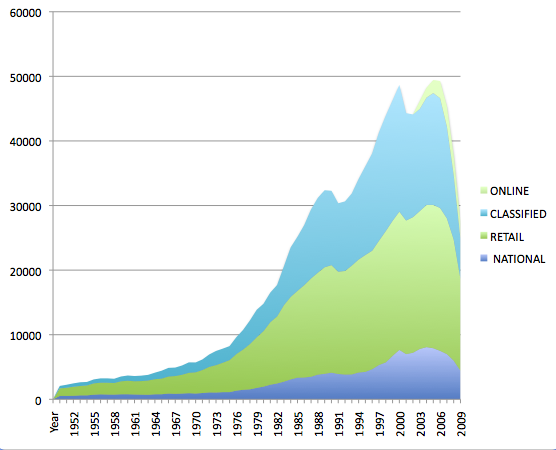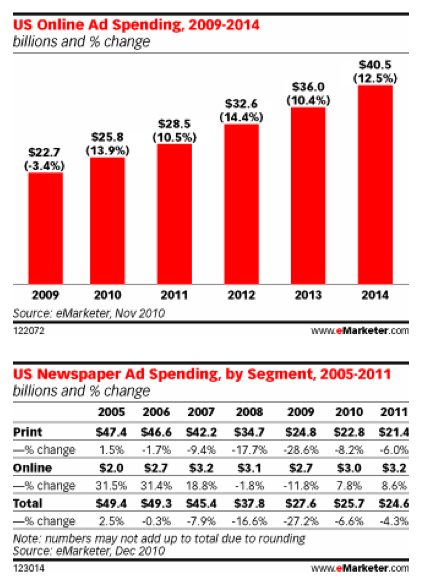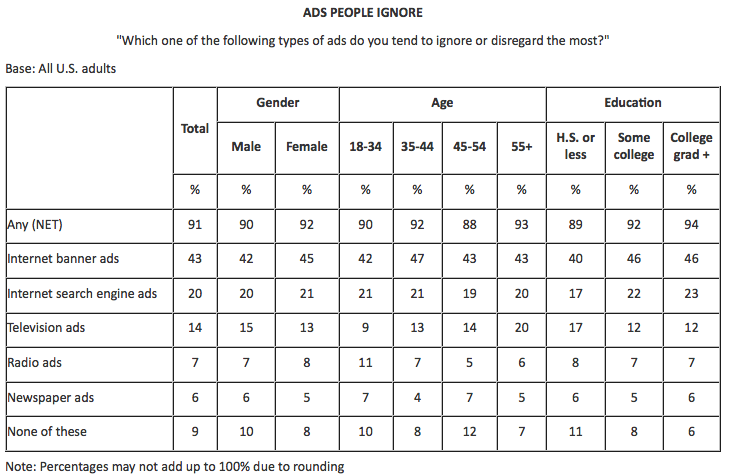Yearly Archives: 2010
Is your neighborhood a community?
What a delightful portrait of a neighborhood living in community, by Laura Grace Weldon in Ohio…
What makes a neighborhood? Sometimes that’s hard to figure out.
I’ve lived in a number of places. Not all of them seemed like neighborhoods. When I was first on my own I used to bemoan that my fellow renters could hardly be bothered to return a wave but someone kept stealing my newspaper…
Then we moved to a little house. It was silly how hard it was to meet the neighbors. They’d wave but that’s about it. It took nearly a year to meet the older couple across the street… Finally I baked a loaf of bread, knocked on their door and said I was sorry we hadn’t gotten a chance to meet. They turned out to be lovely people. They still write long chatty updates to me years after we moved away.
I began to understand that it takes effort to make a neighborhood. So I greeted everyone who moved onto our street with homemade goodies. I shared produce from my garden and offered to help others in any way I could. I also started inviting people over. In the fall we had bike parades where the kids spent a happy hour or so decorating their tricycles, scooters, and bikes to ride around the neighborhood in a grand procession before coming back to our house for a picnic. We had cookouts, Halloween parties, and Christmas caroling parties. We met up for working get-togethers such as picking apples and making applesauce.
The major neighborhood bonding events were our summer pig pen parties… [read the full post]
This jibes with what we see in dozens of neighborhoods where Front Porch Forum is used. It takes effort to breathe community into a neighborhood. FPF can help make it easier… and can help sustain those connections over time.
Hiding in Plain Sight
Vermont Public Radio commentator Andrea Learned chimed in today with a piece called “Sustainable Waldo.”
I’ve been thinking a lot lately about how to nudge more people toward sustainable living practices. While switching out light bulbs and recycling as much as possible are both easy ways to start that process, what comes next? … we may now need to focus on places where sustainability is hidden in plain sight… Remember the “Where’s Waldo” books? Darned if he wasn’t right in front of your nose and you didn’t see him. So where are some sustainability Waldos?
One great example might lie in urban density and community transportation planning issues… Gardening is another activity where sustainability may be hiding in plain sight.
And what about neighborhood involvement, as supported by services like Vermont’s own Front Porch Forum, which host networks of online neighbor-to-neighbor help and information. Communities built on stronger interpersonal relationships and citizen interconnections help build more long-term, sustainable views on big, challenging issues. Whether or not citizens see this as sustainability doesn’t really matter. They are responding to powerful, sustainability-promoting, shared values.
She’s got a point! Sometimes we talk about FPF’s larger community benefits… but most of the time when chatting with folks, we focus on the direct and obvious benefits… use FPF to find an affordable plumber or ride to Boston, to report a car break-in to neighbors, to sell a bike or give away a stroller.
Cities, neighborhoods, community and Jane Jacobs
Convergence from my reading pile…
- Richard Florida: Who’s Your City: How the creative economy is making where to live the most important decision of your life, 2008.
- Jonah Lehrer, NYTimes Magazine, A Physicist Solves the City, Dec. 19, 2010.
- John McKnight and Peter Block: The Abundant Community: Awakening the Power of Families and Neighborhoods, 2010.
Each author talks about cities and neighborhoods, and residents’ decisions about where to live and how to live within their communities. They all reference Jane Jacob‘s pioneering work in community and urban planning. And each is well worth reading.
The Times article examines the research of Geoffrey West who is developing equations that he claims describe cities… parallel to the laws of physics. E.g., “whenever a city doubles in size, every measure of economic activity… increases by 15 percent per capita.” Which leads to the idea that moving a person to bigger and bigger cities will make her more and more economically productive.
Richard Florida’s book is full of interesting survey data. Take a look at his maps. Here’s a sample…

Finally, the most compelling and visionary of the lot to this reader is The Abundant Community. McKnight and Block, from a lifetime of experience lay out their case for “a new possibility for each of us to live a more satisfying life” by joining “our neighbors to live and create a community that nurtures our family and makes us useful citizens.” Lots of tactics and examples placed in a useful framework. Many neighborhoods and rural towns in Vermont are using Front Porch Forum in this way and it’s beautiful to behold.
Year-end look at hyperlocal big boys
Peter Krasilovsky offers a year-end look ahead at the WalMart approach to hyperlocal news…
… there is a rap out there that hyperlocal doesn’t scale and these [Patch and Fwix] are toys. Is it still the case?
Patch now has a local presence in 600 communities, with editorial and sales “pods” of 12 each Some of being run by longtime newspaper industry leaders. Last Sunday, LA Times media columnist James Rainey wrote that Patch is revitalizing local journalism and asserted that may have become THE place for journalists to go (aside from wages of $35k-$50k, or half the salary that big city journalists might have gotten from the big metro, if they were hiring).
Patch President Warren Webster… didn’t dispute my characterization of Patch as an experiment that wants to quickly get a national footprint to attract national, regional and local advertisers; create a business directory that goes beyond the Yellow Pages; and scale editorial and sales resources.
On a macro-level, local ad revenues typically split 50/50 between targeted national and local. For Webster (and cohorts), the bet is that Patch is poised to do both. They’ve publicly said they were spending $50 million to ramp it up in 2010…
Peter offers this list of horses in the race, grouped in an interesting way…
National/regional “hyperlocal” news sites
Local editorial and sales
Patch
Main Street Connect
Hello Metro
TBD.org
Geographic aggregation for media partners
Topix
Outside.in
Fwix
Datasphere
Everyblock
Local event and news sites
AmericanTowns.com
Center’d
DiscoverOurTown
Aggregators also supported by unique user-generated content and pro/amateur content farms
Examiner.com
Associated Content
Demand Media
Helium
Merchant Circle
No more nasty anonymous newspaper comments…
Glad to see this move by the Sun Journal is western Maine…
The obligation to stand behind your words has also been a core principle of journalism and this newspaper for many years.
The Sun Journal does not use unidentified sources in stories. When our readers write a column or letter to the editor for the newspaper they use their real names.
That, we believe, makes them accountable for what they say, plus it adds weight and credibility to their words.
But we have deviated from that principle for the Web, believing for several years that “online” was somehow different than “in print.” Nearly all newspapers have.
While we have known the identity of many people commenting on stories at sunjournal.com, it was difficult or impossible for users to know. As a result, some comments have been factually incorrect, reckless and mean-spirited.
While the technology of the Web is very different, our core principles should remain the same.
Both our website and print newspaper are, in fact, like a town meeting or community gathering.
So, beginning Feb. 1 all online comments at sunjournal.com will be accompanied by the real names of the people commenting. Only registered and verified users will be able to make comments. Anonymous comments will not be allowed.
All commenters, including subscribers and those registered now, will have to re-register under the new system.
Many newspapers, including the Portland Press Herald and the Bangor Daily News, are now taking steps to make Web commenting more responsible and accountable.
But our new system is the most ambitious effort we’ve seen to elevate the level of online discussion.
Plus, most of our current commenters seem to agree. In an online survey, 57 percent said they would prefer that real names accompany online comments.
The Sun Journal’s motto is “Connecting you with your community,” and for more than 160 years this newspaper has knit together Western Maine communities.
The advent of the Web has given us powerful new ways to connect people and allow anyone to become an active part of every discussion.
We know this decision will not please everyone. In time, however, we believe it will result in a better online experience for all.
Newspaper ad spending tumbling… Online ad revenue ascending
Greg Sterling’s post today provided food for thought about online advertising…
U.S. newspapers are indeed in deep financial straights. Here’s a chart from Newspaper Association of America data…

U.S. newspaper revenue from classified, local and national ads are all contracting rapidly, while their income from online ad sales is still tiny in comparison. Total ad sales in 2006 was about $49 billion and in 2009… $27 billion. Wow. U.S. newspaper online ad sales has held at about $3 billion for the past four years.
However, stepping away from newspapers for a moment, online advertising overall is growing impressively. Charts from eMarketer project U.S. digital ad spending raising steadily at 10-14% from 2009 to 2014. Newspapers’ slice of that $25 billion pie is relatively narrow… only about $3 billion.

Will online ad spending continue to climb at this rate? Will it come at the further expense of newspaper ad spending? Does this Harris poll offer a clue?

People tell us they read the ads on Front Porch Forum… and our sponsors keep buying the space. Hard to know where this is all headed… but I do know that we get lots of businesses knocking on our door.
New study: Walkable communities are more socially engaged
From USAToday, report of a new study… people who live in walkable communities enjoy greater social capital than their car-bound fellow citizens. Not too big of a surprise here… common sense. Also, we’ve seen Front Porch Forum lead to increased social capital and one typical outcome is that nearby neighbors talk more face-to-face once FPF catches on. It’s hard to connect with neighbors when you can’t easily see or talk to them.
People who live in walkable communities are more socially engaged and trusting than those who live in less walkable areas, says a new study from the University of New Hampshire.
The study buttresses other research that has linked a neighborhood’s walkability to its residents’ quality of life, notably improved physical and mental health.
The researchers scored 700 residents of three communities in New Hampshire on measures of “social capital” such as socializing with friends, civic engagement and trust in their community. They found those in neighborhoods with higher Walk Score ratings reported being happier and healthier and more apt to volunteer, work on community projects or simply entertain friends at home.
“In the age of increasing energy costs and climate considerations, the ability to walk to important locations is a key component of sustainable communities,” write Shannon Rogers and the co-authors of the study, published online in the journal Applied Research in Quality of Life.
If the residents of these walkable neighborhoods are homeowners, they benefit in yet another way, notes the Sierra Club’s Green Life blog. It cites a 2009 study by CEOs for Cities that founds homes with an above-average Walk Score sold for up to $34,000 more than their sidewalk-less counterparts.
Grand Isle Co. + FPF = iPod?
 Do you know someone who lives in Grand Isle County, #VT… or spends significant time on the Islands? If yes, then please share this…
Do you know someone who lives in Grand Isle County, #VT… or spends significant time on the Islands? If yes, then please share this…
Join your Grand Isle County neighbors at FrontPorchForum.com and win an iPod!
Sign up today for your town’s e-newsletter: Front Porch Forum. If you live in The Islands you’ll be entered to win an iPod shuffle!
Front Porch Forum is building community in the Islands by helping neighbors connect. Need a babysitter, electrician, or snow plow guy? Just type a quick message and it goes out to your neighbors. Want people to attend an event, or know about a break-in? FPF is a great way to get the word out.
It’s easy to sign up… just go to FrontPorchForum.com and fill out a quick form. Then start reading and posting!
Do it soon! Only new sign-ups received by December 31, 2010 will be eligible to win the iPod shuffle. Sign up at: FrontPorchForum.com
Sample messages:
- Group rate for fuel oil
- Seeking reliable plumber
- Break-in report
- Free bookcase and table
- Childcare available
- Keys found
- Community supper in the works
- School board member responds
- Casseroles for sick neighbor
Front Porch Forum is available across 50 Vermont towns, now including all of Grand Isle County. Thanks to the e-Vermont initiative for sponsoring FPF in The Islands.
Average U.S. Adult Investing 19% of Life in…
Wow. This is depressing. Screen time is on the rise among American adults. From eMarketer…

That’s about 4.5 hours of TV time for the average adult? What could we possibly be watching that’s worth 19% of our remaining time on Earth?
And only 2.5 hours on the internet? Well… full disclosure… I’m way over that amount… as are loads of my peers. I wonder what the Internet data range looks like… lots of zeros on one end and 8-10 hour/day people on the other perhaps.
And a big jump in brain-cancer-sticks/cell phones… almost an hour/day. We are a chatty species. I wonder what percentage of mobile use is inane… compared to other media use? Maybe it’s similar… but I just don’t have to be aware of what the person next to me in the store is watching on TV or surfing on the Internet. And why don’t we see landline use in this kind of analysis? Or books? No advertising opportunity, I guess, is the short answer… therefore not media?
One more thought… most of this media consumption (despite social media, most of these media hours I’d guess are still primarily passive and consumptive) can occur at many workplaces… mobile, internet, radio, etc. But not TV. So, if the average adult is spending 4.5 hours after the workday watching TV… sheesh… no wonder this country is struggling.
A quick cobble of internet-sourced data (here and here) shows how we U.S. adults are spending our remaining days of life…
33% Sleeping
31% Working
19% Watching TV
5% Caring for others
4% Eating
2% Commuting
5% Other stuff… perhaps even including local community involvement
TV is robbing the places where we live of people-hours… of capacity to get things done… of the chance to even get to know each other and live in community.
This is where Front Porch Forum comes in. We aim to help neighbors connect and get tuned in to local goings on. FPF seeks a few minutes every day or so of members’ attention to focus on the people and issues right around them. In doing so, FPF members report feeling more a part of the place they live, more connected… and, eventually, more involved. I wonder if FPF membership might even help steal some of those 4.5 hours a day away from the cathode ray nipple (LCD nipple?) and return them from whence they came… to our nation’s neighborhoods, clubs, churches, schools, parks, pubs, town halls, polling places, and other gathering spots.
About Blog
Ghost of Midnight is an online journal about fostering community within neighborhoods, with a special focus on Front Porch Forum (FPF). My wife, Valerie, and I founded FPF in 2006... read more
Post Categories
- Uncategorized
- PDF2009
- Calendar
- Northeast Kingdom
- podcast
- Peer Rental
- Localization
- Big Tech
- Events
- PDF2007
- Web Traffic
- Google AdSense
- Pay It Forward
- Elections
- berkmansunlight
- Maps
- Video
- Upstate New York
- Coupons
- Wildlife
- Mobile
- Viral Marketing
- Raffle
- Crisis Response
- Donations
- Lost & Found
- Real Estate
- College Students
- Gratitude
- Social Responsibility
- Orton Family Foundation
- Start ups
- Make It Your Own Awards
- Online Civility
- Clay Shirky
- Newspapers
- Humor
- How To Use FPF
- Best of FPF
- Online Classified Ads
- Peer Reviews
- Politics
- Community Management
- Economic Development
- Local Reviews
- Case Foundation
- Borrow and Lend
- Neighborhood Watch
- Good Government
- Small Business Advertising
- Citizen Journalism
- e-Vermont
- Democracy
- Local Search
- Knight Foundation
- Burlington
- MacArthur Fellows
- Civic Engagement
- Social Media
- social capital
- Social Networking
- Vermont
- Neighborhood
- Community Building
- Local Online
- Front Porch Forum